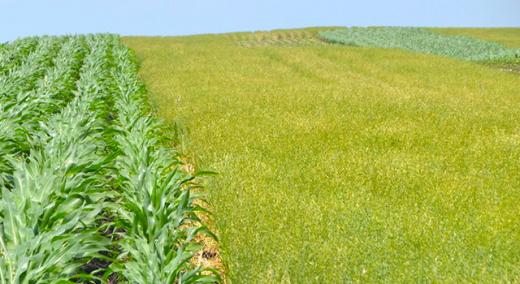This story was originally published by Knowable Magazine.
Alfalfa, oats, and red clover are soaking up the sunlight in long narrow plots, breaking up the sea of maize and soybeans that dominates this landscape in the heart of the U.S. farm belt. The 18 by 85 meter sections are part of an experimental farm in Boone County, Iowa, where agronomists are testing an alternative approach to agriculture that just may be part of a greener, more bountiful farming revolution.
|
ADVERTISEMENT |
Organic agriculture is often thought of as green and good for nature. Conventional agriculture, in contrast, is cast as big and bad. And, yes, conventional agriculture may appear more environmentally harmful at first glance, with its appetite for synthetic pesticides and fertilizers, its systems devoted to one or two massive crops and not a tree or hedge in sight to nurture wildlife.
As typically defined, organic agriculture is free of synthetic inputs, using only organic material such as manure to feed the soil. The organic creed calls for caring for that soil and protecting the organisms within it through methods like planting cover crops such as red clover that add nitrogen and fight erosion.
…

Add new comment